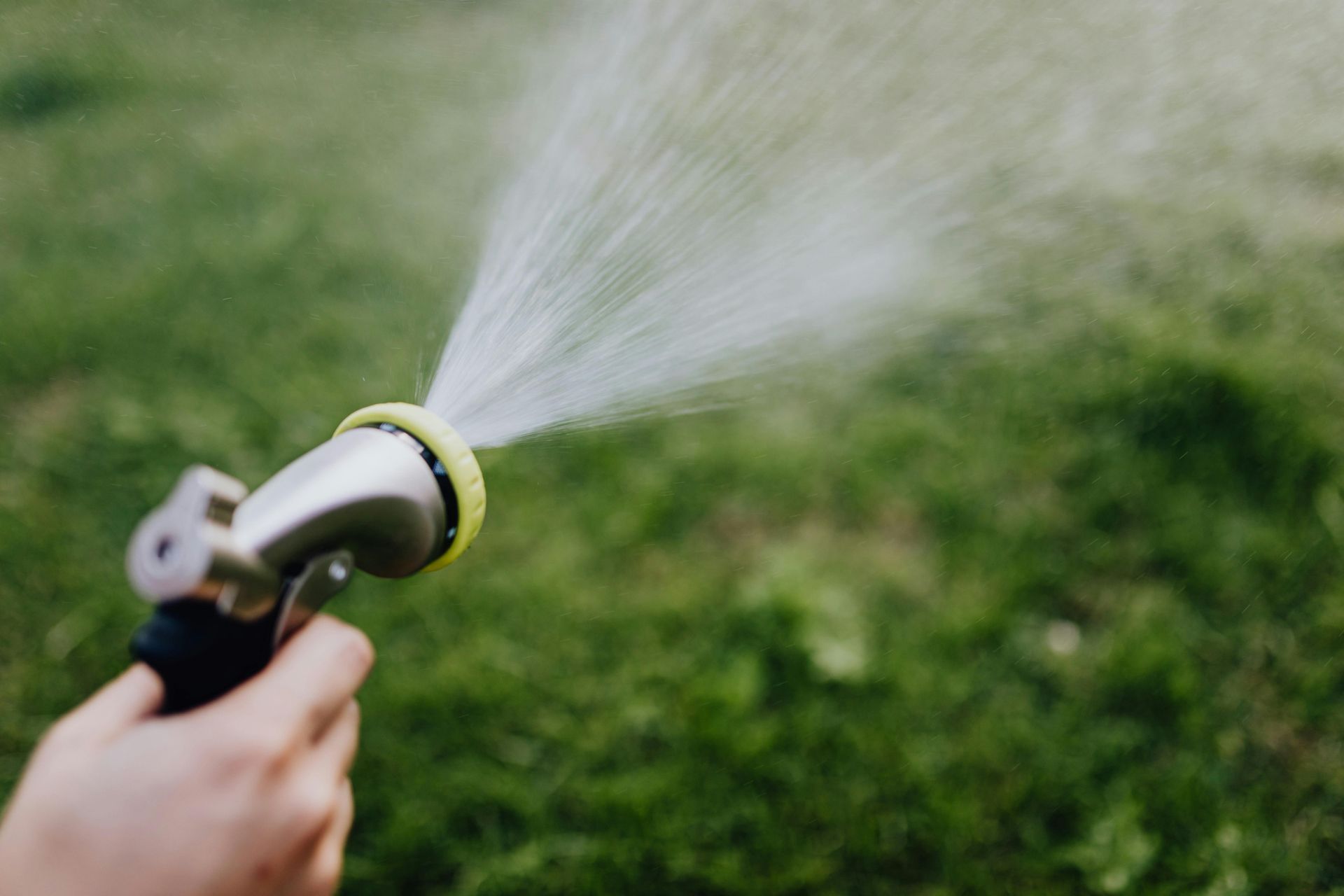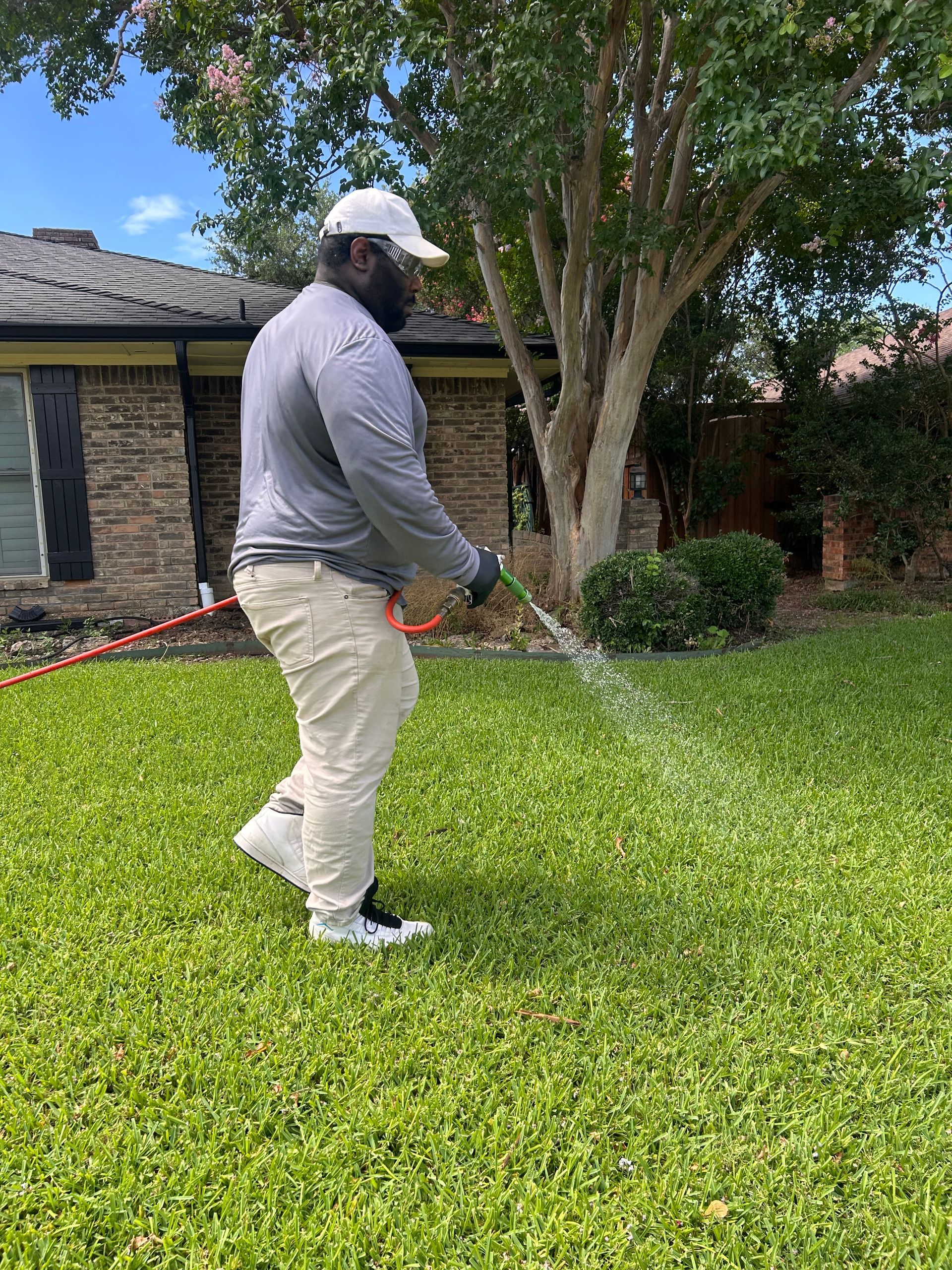DIY Lawn Care: How to Water, Mow, and Treat Your Lawn for Weeds and Mosquitoes
Want a thick, green lawn without hiring a landscaper? Good news—you don’t need a pro to get professional results. With a little know-how and consistency, you can take control of your yard by learning how to water, mow, and treat your lawn for weeds and mosquitoes. This DIY lawn care guide will show you how.

1. Watering Your Lawn the Right Way
Proper lawn watering is one of the most important parts of keeping your grass healthy. Whether you’re maintaining Bermudagrass, St. Augustine, or Zoysia, consistent watering habits help your lawn resist weeds, pests, and drought stress.
Best Practices for Watering Your Lawn:
- Water early in the morning (6–10 AM). This allows grass blades to dry out during the
- day, preventing fungal growth and mosquito activity.
- Aim for 1 to 1.5 inches of water per week, including rainfall.
- Water deeply and less often to encourage deep root growth.
- Use a sprinkler system or smart irrigation controller for even coverage.
DIY Tip: Use a tuna can or rain gauge to measure how much water your sprinkler puts out.
2. Mowing for a Healthier Lawn
Correct mowing techniques keep your grass dense and discourage weed growth. Overcutting or dull blades can cause unnecessary stress and leave your lawn open to disease and insect infestations.
Lawn Mowing Tips:
- Mow regularly, but never remove more than 1/3 of the grass blade at once.
- Keep mower blades sharp to prevent tearing the grass.
- Adjust your mower height based on your grass type:
- Bermudagrass: 1–2 inches
- St. Augustine: 2.5–4 inches
- Zoysia: 1–2.5 inches
- Tall Fescue: 2.5–4 inches
- Mow when the grass is dry to avoid clumping.
- Leave grass clippings on the lawn—they break down quickly and feed the soil
3. Weed Control for Lawns
Lawn weeds like crabgrass, dandelions, and clover thrive in stressed or thinning turf. Weed control is essential for maintaining a lush, uniform lawn.
How to Control Weeds in Your Lawn:
- Apply a pre-emergent herbicide in early spring and fall to stop weed seeds from germinating.
- Use a post-emergent herbicide to kill existing broadleaf weeds like chickweed and dandelion.
- Spot-spray problem areas rather than treating the whole lawn.
- Pull weeds by hand when possible—make sure to get the roots.
Organic Option: Vinegar-based or natural weed killers can work on younger weeds, but they should be used carefully to avoid harming your grass.
4. Mosquito Control in the Yard
Even the best-looking lawn can be ruined by mosquitoes. These pests aren’t just annoying—they can also carry harmful diseases. Your lawn care routine should include steps to prevent mosquito breeding.
Mosquito Prevention Tips:
- Remove standing water from pots, gutters, toys, and birdbaths. Mosquitoes lay eggs in as little as a bottlecap of water.
- Keep grass, shrubs, and hedges trimmed to reduce shady resting spots.
- Use a mosquito barrier treatment or yard-safe spray during warm months.
- Apply larvicides (like mosquito dunks) to water you can’t remove.
Bonus Tip: Lawns that are overwatered or constantly soggy attract more mosquitoes. Water less frequently but more deeply
DIY Lawn Care Schedule (By Season)
- Spring: Fertilize, mow, and apply pre-emergent weed and mosquito control.
- Summer: Maintain mowing, water deeply, and treat for existing weeds and mosquitoes.
- Fall: Aerate, overseed if needed, and apply another round of pre-emergent.
- Winter: Keep your yard tidy and avoid foot traffic on dormant grass.
Keeping your lawn green, weed-free, and mosquito-free doesn’t require expensive services. By following these DIY lawn care tips, you can take pride in a yard that looks great and feels even better to enjoy.





